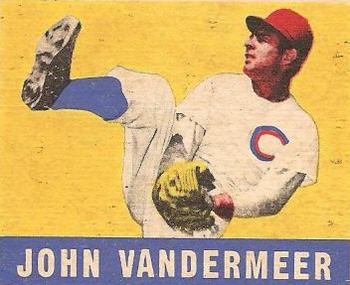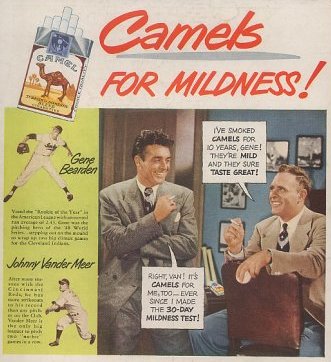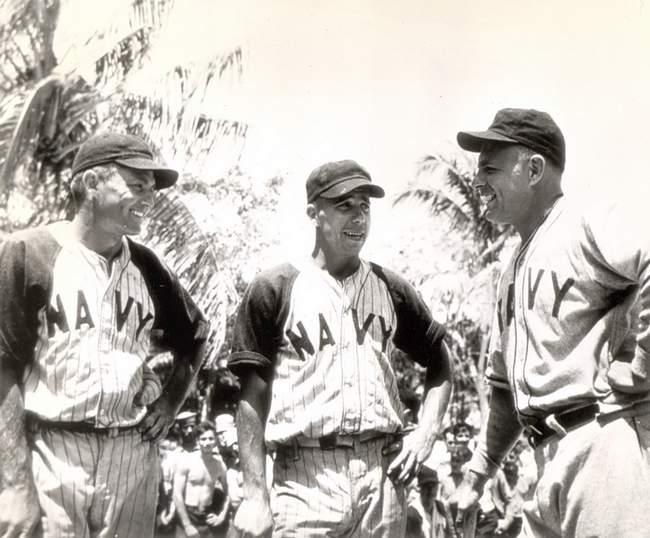

|
|
Johnny Vander Meer
Date and Place of Birth: November 2, 1914 Prospect Park, New Jersey
Died: October 5, 1997 Tampa, Florida
Baseball
Experience:
Major League
Position:
Pitcher
Rank:
Unknown
Military Unit:
US Navy
Area Served: Pacific Theater of Operations
 John
S “Johnny” Vander Meer was born on November 2, 1914 in
John
S “Johnny” Vander Meer was born on November 2, 1914 in
In 1934, he advanced from
Class C to Class A ball with
Vander Meer secured a place in the game’s history in 1938 by throwing the only major league back-to-back no-hitters. On June 11, 1938, he defeated the Boston Bees, 3-0. Four days later in the first night game ever played at Ebbets Field, he no-hit the Brooklyn Dodgers, 6-0. Interestingly, his no-hitters came against teams whose organizations he used to play for. Vander Meer finished with a 15-10 record that year, a 3.12 ERA and a one-hit, three-inning winning performance in the All-Star game.
 He
was just 5-9 with a 4.67 ERA in 1939 and split the 1940 season
between
He
was just 5-9 with a 4.67 ERA in 1939 and split the 1940 season
between
Vander Meer had won the National League strikeout crown for three straight years (1941 to 1943) when he entered military service on March 3, 1944. "I might've had a shot at the strikeout crown for about five consecutive years," he later said.
He served with the Navy at the Sampson Naval Training Center, New York, where he was assigned to the Welfare Recreation Dept and regularly pitched for the ball team. On June 5, 1944, Sampson beat the Boston Red Sox, 20 to 7. After a shaky first inning in which Vander Meer allowed three runs, he hurled scoreless ball until the eighth when Hal White replaced him. He also had three hits on the day.
The Sampson team finished
with 26 wins and one loss in 1944. Then, in September of that year,
Vander Meer left for
 |
| Johnny Vander Meer (right) with May and Pee Wee Reese in the Pacific |
During 1945, Vander Meer
toured the Pacific with the Fifth Fleet ball team and was stationed
for much of the time at
Vander Meer managed in the
Johnny “Double No-Hit”
Vander Meer died of an
abdominal aneurysm at his
home in
Created March 17, 2008.
Copyright © 2008 Gary Bedingfield (Baseball in Wartime). All Rights Reserved.